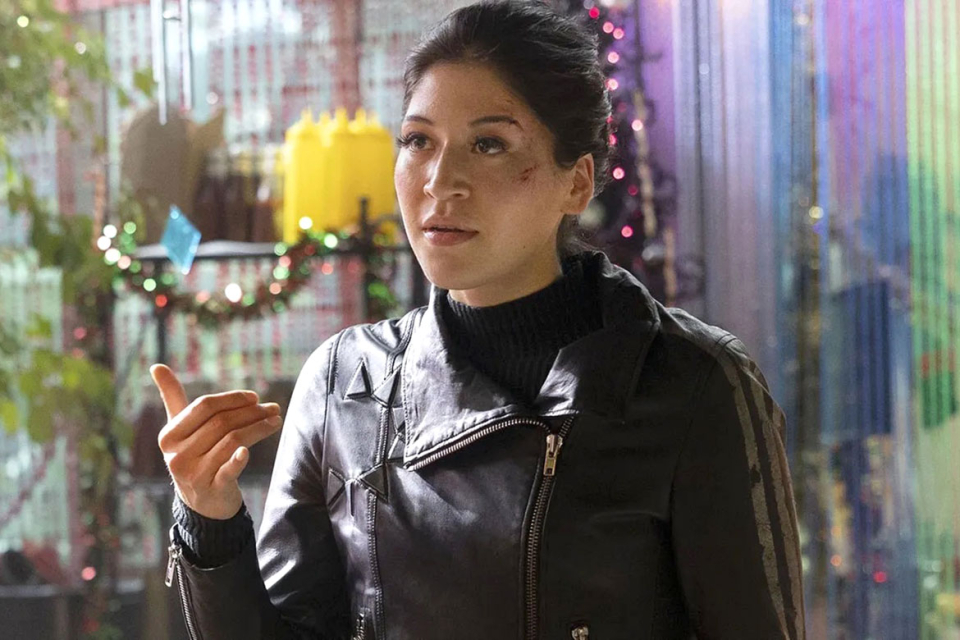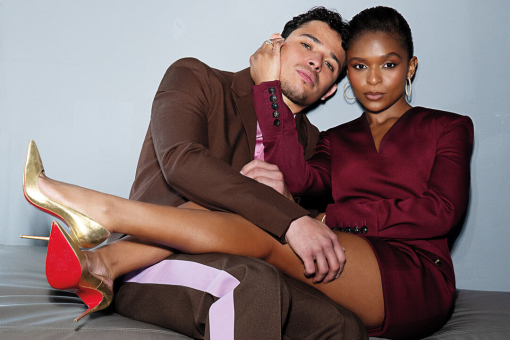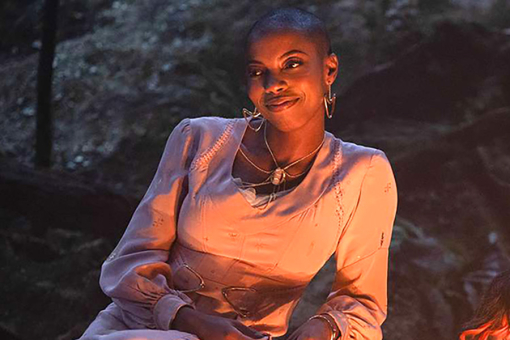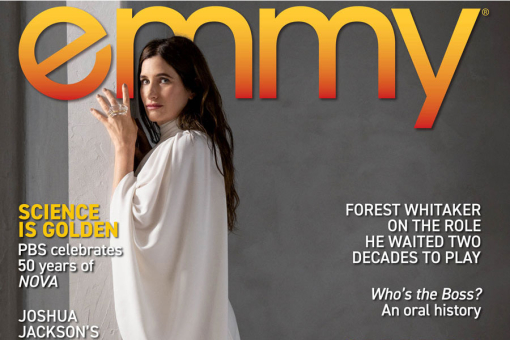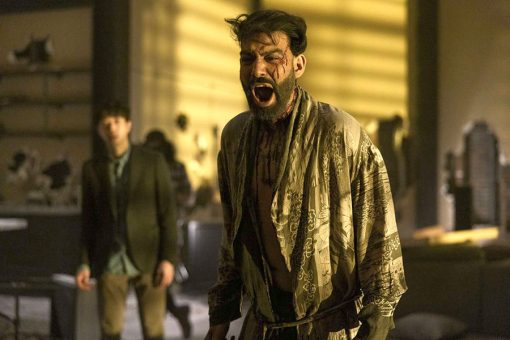While you may not know his name, Marc Scizak has played a vital role in shaping the Marvel Universe for the last several years.
Scizak worked on such Marvel and Disney+ shows as WandaVision, Ms. Marvel and She-Hulk: Attorney at Law. Most recently, he served as stunt coordinator and second unit director on Echo, Disney+'s new grounded crime-drama set in the MCU — and the first series to fall under the studio's Marvel Spotlight banner, which promises to focus on more adult-oriented and self-contained stories. The five-episode miniseries, directed by Sydney Freeland and Catriona McKenzie, follows Maya Lopez (Alaqua Cox) as she struggles to build a crime empire of her own while her family history threatens to pull her in a different direction. (Lopez was first introduced in Disney+'s Hawkeye as the right-hand muscle for Vincent D'Onofrio's Kingpin).
While audiences may think Scizak's job boils down to merely coming up with spectacular car crashes or elaborate fight sequences, it's much more complicated (and compelling). To celebrate Echo's release, Scizak took the Television Academy behind the scenes of what it takes to make an action-packed Marvel streaming series that weaves its emotional story threads with the more stunt-heavy ones.
Your backstory is impressive: You were a firefighter, motorcycle racer and ski patroller, but you always wanted to be a stunt performer. How did those experiences and their respective skillsets eventually lead you to your dream career?
I was born in Northern California, and I grew up watching TV shows and movies like The Fall Guy, Hooper and The Stunt Man. It was always a dream for me to be a stuntman. But I never knew how you got into it, and I didn't have any connections. So I ended up going to Chico, California, for a little bit and then I went through the Fire Academy. As I was doing that, I had a couple of friends doing some student projects — and one of them was doing a feature that was being shot in Chico. Through that, I got a little taste of what filmmaking and stunt performing were like and decided that I needed to do whatever I could to pursue it.
I joined the San Francisco Fire Department, and when I was there I had another friend who was going to film school in San Francisco. I just started doing all of his little student projects, mostly stunt-related. I would do some car hits, and we did some spec commercials for Bell Helmets, where I would do a mountain bike scene and then go over the handlebars — head first — into a tree. And I just found my life's passion and pursued it from that.
In terms of production on Echo, what was the major difference between this Marvel project and others you've done in the past?
In the case of Echo, it was all about making superheroes more grounded. There's no flying [stunts] in Echo, so the [wire] rigging is a little bit different since we're not doing big flying sequences where characters take flight or fight each other in the air. Also, in Echo, our hits are not as massive — meaning we don't have to throw somebody across a room. We got into a lot more of the hand-to-hand combat in Echo. There are pros and cons to both the grounded and big fantastical elements, as far as how difficult and how much time they take. It takes a while to fly an actress a couple hundred feet down the road as far as setup goes, but choreographing a massive fight also takes a ton of time and a lot of research and development. There's a lot of going back and forth with the director to get exactly what she wants as far as her vision goes. But in both cases, you need the studio to sign off on it so that it tracks with their plans. So a show like Echo is different from some of the other Marvel shows I've done, but they're always a very similar process.
Mike Wilson is credited as Echo's fight coordinator, so I'm curious how your job as stunt coordinator overlaps with his.
We had Lloyd Bateman, Mike Wilson and Christopher Troy as my lead fight people, and they were chopped up between different sequences. But as stunt coordinator I oversee everything, so I'm the one hiring these people. I'm the one that is doing the meetings with the director and that kind of stuff in the studio. And I'm getting my team to essentially put together what we're looking for. In that process, I'm gonna use every tool I have, which is a bunch of very, very talented people to bring their flair, to bring their little pieces into it — and that includes the stunt doubles. I always want to see what a stunt double can do, what they excel at, or some move they thought was amazing that they've never gotten to use. So it's a village, and we take all of this stuff, put it together and then start modifying and changing it.
In Echo, director Sydney Freeland and I looked at the stunts in terms of the story we were trying to tell with each fight, and we made the adjustments with that. It was a very collaborative process in building a fight like that.
Echo has been recognized for having a disabled lead character, Maya Lopez, who — like actress Alaqua Cox — is deaf and has a prosthetic leg. Did these factors change your approach to the fights in terms of using ASL? Or thinking about how a prosthetic leg would affect fight scenes?
We try to use whatever advantage we can, and having the prosthetic leg was an advantage in many ways. Alaqua can block with it without feeling pain, and it changes the dynamics of some of the fights. Much of it came down to movement, and Alaqua moved really well. We did everything we could to train our actors in the beginning before we started shooting, especially on a show like this, because they have so little time once we start shooting. Learning their strengths and weaknesses and working on those, and getting to know the actors so we can build a fight around them in the rehearsal phase, is very important. Because if I build a fight they can't do, or that they don't do well, then it's not gonna look good.
The ASL communication side of it, while not typical, wasn't a challenge. We could let Alaqua know what was looking good and what we wanted her to work on. Her strength gave us a really good sense of her movement, which was essential when it came to selling the actual fights.
One of the biggest highlights of Echo, particularly for Marvel fans, was the fight between Echo and Daredevil. Tell me about constructing that sequence and working with director Sydney Freeland.
We talked to the studio a lot about what direction they wanted to take Daredevil in, compared to his depiction in his previous [Netflix] series. They wanted him to be a bit more acrobatic, so we tested the waters there. I love the fact that Daredevil gets to kind of play with [Echo], and then he's a little surprised by how well she can hold her own. And, in the end, he gains some respect for her. Our director, Sydney, is amazing, and she loves to shoot action. But this ended up being difficult, because we had a very limited amount of time to shoot that scene. There was a production in that space before us, and there was one coming right after. For these shows, typically the main unit will go in and then the second unit will go in and finish it. Well, on this fight, we couldn't do that because of timing. It just wasn't possible. So I went in first as the second unit director, and I shot the entire scene with stunt doubles. And for Syd to very reluctantly let me do that scene, which she would've loved to do, was a big deal, and I think she was happy in the end. But in terms of shooting the scene, we went in there and rehearsed one day in that location. And then we literally had two days to shoot that entire sequence — and about half a day with the actors.
So with Charlie [Cox], it was unfortunate because he would have loved to be in this fight more than I was able to put him in, just because he had no rehearsal time. He flew in the day before we shot, and I showed him a couple things. But after we filmed it he had to leave again. So it was a very tight window for us to put all that stuff together, but everybody did a phenomenal job. And for Sydney to be okay with letting me go in and shoot first was awesome, too, and such a move of confidence. Working with her and our other director, Cat [McKenzie], was just a lot of fun.
In recent years, there has been much conversation about getting stunt work recognized at the Academy Awards. The Emmys got on board in 2021. Is there anything you would want people to know about your craft that they may not quite understand the importance of?
You know, it still blows me away that it's not recognized — even in terms of Second Unit directors who are sometimes shooting whole scenes with the cast. I know originally the Academy didn't want people to put other people's lives in danger to try to win awards by doing the bigger stunts. But none of us are doing anything like that. I mean, [ensuring safety] is something we all have to do. It's the main point of what we do. But, honestly, without having people come to set and actually see what we do, and how involved we are, it's a difficult message to convey.
The bottom line is we're all storytellers, from production design to costuming to hair and makeup. We're all telling a story, so to take one group of storytellers and say, "Hey, yours is okay to be recognized, but yours over here is not," doesn't make any logical sense to any of us. Regardless of whether we're there to design a fight, perform a stunt or just be there for the safety of the actors — we're here to tell stories.
This interview has been edited for length and clarity.
Echo is now streaming on Disney+.




